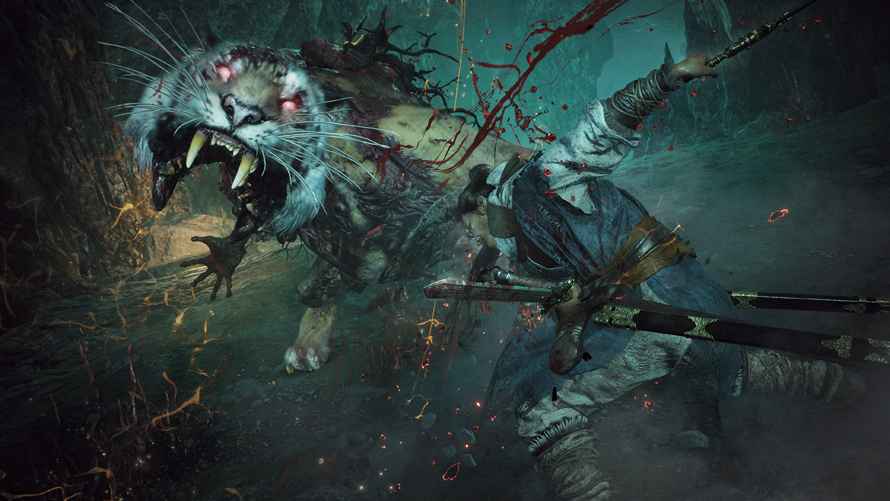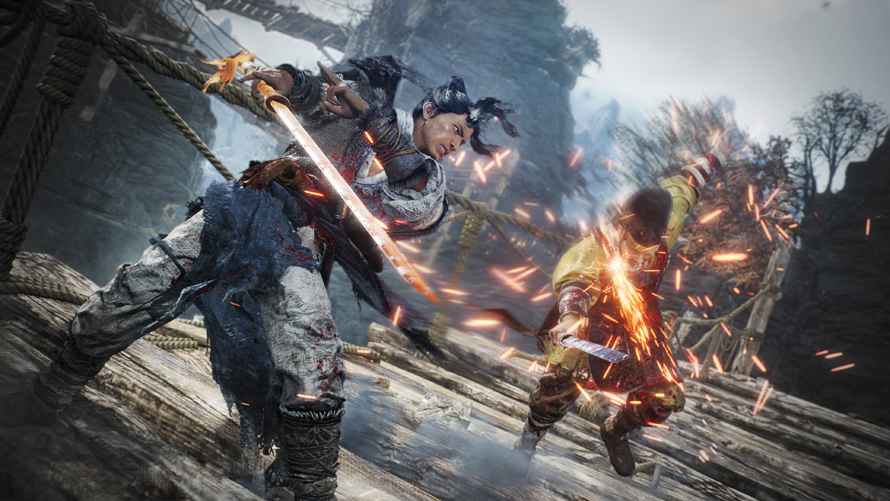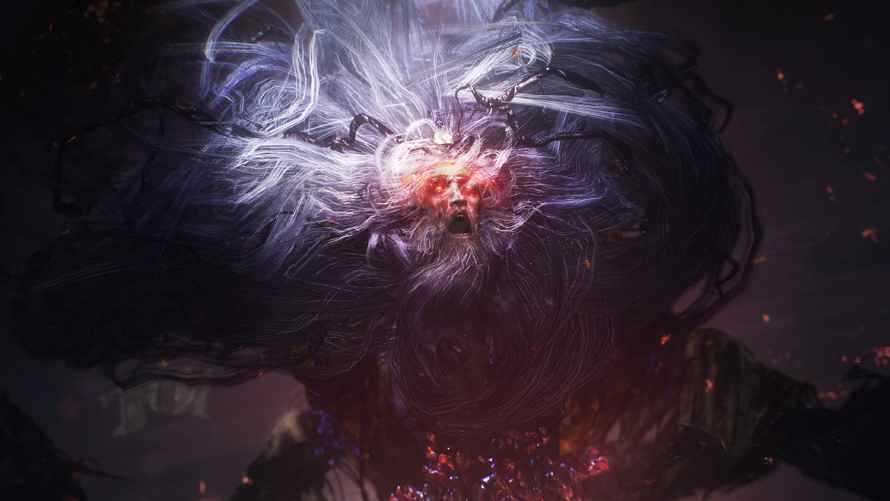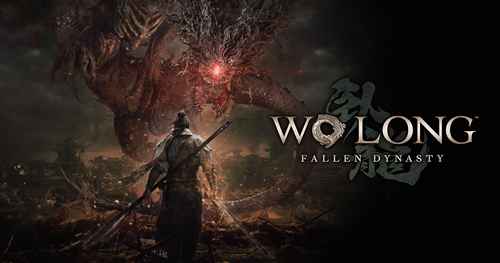Wo Long Fallen Dynasty Review
We’re not gonna go there. We’re not going to have a discussion about difficulty in games. You know, about how games need difficulty sliders, easy modes and accessibility settings to mitigate challenge. Nope. A developer can make a game as punishing or as easy as they want, because it’s their concept, their art and their money. That said, casual players recently converted to Soulslikes via Elden Ring might find Wo Long: Fallen Dynasty a bit of a painful shock. Souls veterans who love to brag on Reddit that they bested a boss in one try, blindfolded, while making a pizza and doing their taxes, will love it. What about all of us in between?
Isn’t It Romantic?
The elevator pitch for Wo Long: Fallen Dynasty is that it’s a spiritual successor to Team NINJA’s excellent Nioh games. Like those titles, Wo Long is a Soulslike through and through, but comes even closer to FromSoftware’s skill-demanding Sekiro than the mainline Dark Souls games. To call Wo Long a giant step forward in the evolution of the Soulslike genre would not be hyperbole. There are so many mediocre, copycat Soulslike games that Wo Long comes as even more of a revelation.
Wo Long’s narrative and story presentation feel like they’re ripped from a martial arts melodrama. The game takes place in China in the second century AD. The story is based on the classic novel Romance of the Three Kingdoms, but with monsters, demons and undead. You are a soldier in Han Dynasty China — the title means “hero that has not yet achieved greatness” — destined to rid the land of human enemy factions and supernatural foes.
While Wo Long’s action is center stage, the drama is no slouch. The game’s writing and English voice work are generally very good, and the game’s NPCs are memorable in an over-the-top, cinematic way. Wo Long’s balance between combat, exploration and narrative cutscenes is spot on. I never felt like any of them overstayed their welcome. Overall, the game’s pacing should be a model for the genre. Sometimes, narrative takes priority over the clear introduction of new mechanics. More on this later.

Crouching Dragon
Where Wo Long: Fallen Dynasty really shines is in its combat, systems and mechanics. At first, they seem a little opaque, and it feels like the game is cluttered by too many ideas. It takes some time before all the systems begin to click and start to synergize. At that moment, you start to understand how brilliant Wo Long’s combat is, and how it successfully diverges from other Soulslikes, while still retaining the all-important FromSoft vibe.
Congruent with Chinese Confucian philosophy, Wo Long’s systems are based around 5 Phases, essentially the elements of Metal, Wood, Water, Fire, and Earth. There are no classes. Instead the element a player selects determines a character’s stats, starting spells, and what divine beast will aid them. Weapons are tuned to the phases, so it becomes critical that one’s weapon of choice is in harmony with the leveled-up elements. Similar to other RPGs with stats like strength, stamina or vitality, the player can use Qi to level up their elemental alignment. In addition to killing enemies, Qi comes in flake form out in the world.
While the phases are essentially variations on traditional RPG character and weapon stats, Wo Long’s spirit and morale mechanics play a new tune on stamina management. Both the player and enemies have a spirit meter, with an orange negative side and blue positive side. By landing normal hits the blue spirit gauge fills, which allows for the use of magic and special moves. Using those special abilities, blocking or deflecting uses up the positive spirit. If it goes into the negative side and fills up, the player is left open to be staggered.
Morale Boosters
Wo Long’s morale system is another mechanic that adds depth to combat. The player and enemies have a morale rating displayed above them. Defeating a character with a higher morale rating translates into better loot drops and a boost to morale for the player. Morale is also increased by planting flags in the world, and by defeating enemies without dying. Death resets morale to the last save point level. While grinding for gear and XP is a standard action game mechanic, grinding to raise morale before a big boss fight is a winning strategy.
Magic is linked to both morale and elemental power. Some spells aren’t available at low morale levels. Magic spells are much like those in other RPGs, like the ability to shoot fire, lightning or poison, to enchant weapons or enhance abilities. Finally, each weapon comes with a set of built in martial arts moves. These flashy attacks, like magic, use up spirit, but are often critical in combat.
Like Team NINJA’s Nioh and especially like Sekiro, combat in Wo Long: Fallen Dynasty is a fast and furious brutal ballet of swordplay, magic and movement. It favors offense, but rewards skilled defensive play, too. Different enemies — even different phases of bosses — demand the ability to switch tactics and master them all. There’s a lot to pay attention to.

Gated Community
Remember going to an amusement park and seeing the sign “You Must Be THIS Tall” to ride the coaster? Wo Long’s first boss is like that. He’s a two phase dude that demands unrelenting aggression and then an equal amount of defense. He serves as a warning but less obviously as a fantastic trainer. By the time you’ve beaten him, you’ve come a very long way to understanding Wo Long’s systems. After you replace your controller, you’ll get it. And you’ll probably be hooked. Once past the first boss, there is a wide range of challenges ahead. Some bosses are far less exacting than the first, and you’ll have deeper tools to help you.
Exploring Wo Long’s world is a relatively linear experience, guided by the narrative and broken up by shortcuts, side paths and secrets. Visually, its palette is less colorful than either Nioh game, but the countryside and villages’ detailed textures and art direction capture 3rd century China, just like Nioh did for 17th century Japan. Wo Long: Fallen Dynasty might not be bleeding edge in the looks department. But, like Elden Ring, its art direction, fluid animations and music work together. The game looks and sounds great.
On the PS5, there isn’t a huge range of settings to tweak. The lack of difficulty options, either through gameplay assists or levels of challenge, will disappoint many casual action fans. This may be the one area where Team Ninja is most dedicated to the Soulslike model. But it’s true for Wo Long just as it is for Elden Ring, Nioh, Bloodborne or Sekiro. The difficulty is entirely dependent on repetition, skill and smart use of mechanics. Easy mode is built in to your reflexes and brain. And if all that doesn’t work, you can summon NPCs and human players to help you.

Hidden Tigers
Wo Long is a brilliant game, but it isn’t perfect. The game’s camera loathes walls and tight spaces and can’t always track the action precisely. There are issues with minor bugs and scenery pop in, and I had one instance of a boss throwing me through the geometry into the nether regions below the surface. It would have been amusing had it not come just prior to me landing a final strike.
This is a game that trusts its players to read, because while many mechanics are familiar to Souls fans, some basics are poorly articulated, and rarely introduced via the narrative. The information is there to find, but more than once I thought, Oh, that’s how it works. Especially early in the game, it pays to actually read the game play tips during the loading screens.
Like Sekiro and Team NINJA’s Nioh games, Wo Long: Fallen Dynasty demands a lot from the player, specifically persistence, creativity and let’s be honest, decent timing and reflexes. In lots of key areas it’s a pretty traditional Soulslike, with all the challenges and rewards that come with the genre. Wo Long’s particular brilliance lies in its new mechanics and the way they flow in and out of every encounter. While some moments and fights can seem like insurmountable, immovable walls, getting around, through, or over them is never boring. Wo Long both honors the genre and pushes it forward in an exciting way.
***PS5 code provided by the publisher for review***
The Good
- Fluid combat mechanics
- Plenty of challenge
- Mixture of old and new ideas
The Bad
- Bugs and graphics glitches
- Some uninspired levels
- Difficulty spikes

